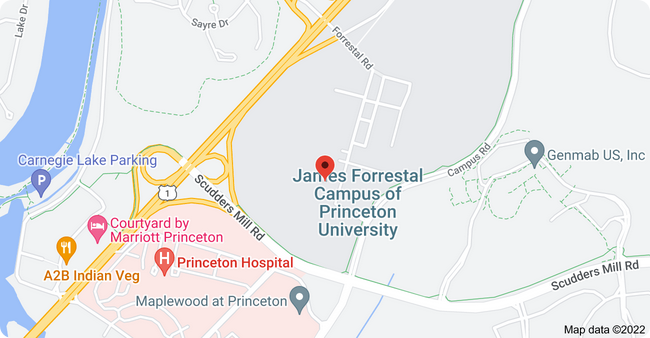Joint Pain Conditions
The Penn Joint Replacement Program treats many conditions that affect the hip and knee, including:
- Avascular necrosis (death of the bone in the joint)
- Bone tumors
- Hip dysplasia
- Hip fractures
- Knee deformity with pain and loss of cartilage
- Knee injury
- Osteoarthritis
- Rheumatoid arthritis
Joint Pain Treatments and Services
At the Penn Joint Replacement Program, our entire team of specialists collaborate across multiple disciplines to ensure a comprehensive, seamless continuum of care for individuals undergoing joint replacement procedures. Our team works together to provide a wide range of treatments — not just surgery — to help you return to an active, pain-free lifestyle.
Robotic Joint Replacement
Precision is vital in a joint replacement procedure. The more exact a surgeon’s measurements, the better they can plan and execute your surgery. Penn Orthopaedic surgeons are uniquely equipped with state-of-the-art surgical systems that make joint replacement procedures available to more people than ever before and offer precise, accurate, patient-specific care.
Dr. Smires would like to thank Dr. Travers for putting together a video of robotic knee replacement at Penn. Here at Princeton we have the most experience in central NJ, over 6 years, using Mako Robotic arm assisted surgery since 2019 for all of our primary total hip, total knee, and partial knee replacements.

How it’s Done
Actual Robot assisted knee replacement
If you are interested in watching an actual robotic knee replacement surgery as well, you may also view our surgical video. NOTE: This video contains graphic surgical footage so viewer discretion is advised.
What is Robotic Hip Replacement?
A robotic hip replacement is similar to a traditional hip replacement. Your surgeon removes damaged tissue in your hip and replaces it with an artificial joint. The difference is that it’s done with assistance from a robotic arm, which allows for greater precision.
Your surgeon will discuss all hip replacement options available to you, including whether you are a good candidate for robotic joint replacement.
How do Mako Hip Replacements Work?
If your orthopaedic surgeon recommends a Mako hip replacement procedure, the first step is to take pictures of your joint that will be used to plan your surgery. Penn’s imaging team will take the specialized CAT scans the Mako needs to do its job.
These pictures are so precise that your surgeon can determine the best approach before you enter the operating room. The scans take into account your bone structure, the alignment of your hip joint, and surrounding tissues. This helps your surgeon plan every step of your surgery, including picking the best implant size, location and positioning.
When it is time for your Mako hip replacement, your surgeon will use tracking pins along your knee and hip that help the robot “see” your anatomy. Then, the Mako arm will position itself according to those measurements, and your surgeon will use the robotic tool throughout the procedure. The Mako does not perform surgery on its own. Instead, it acts as a guide, helping your surgeon follow the plan laid out in advance. This means more precise incisions and optimal positioning.
After your surgery, your surgeon and the rest of your care team will monitor your progress, help to relieve discomfort, and chart a course for your at-home recovery.
Benefits of Robotic Hip Replacement
There are several advantages of robotic-assisted hip replacement surgery when compared with traditional surgery. Advantages include:
- Enhanced surgical planning: Specialized 3-D images are taken in preparation for and during surgery. These images help your surgeon more accurately plan the optimal type and placement of your replacement joint to ensure the right size and fit.
- Greater precision: Robotic technologies enhance your orthopaedic surgeon’s expertise for more precise planning, tissue removal and implant placement.
- Optimal joint alignment: With robotic technology, your surgeon is able to better align and position your hip implant. This helps ensure a more natural-feeling joint replacement and create less friction and wear on your new joint.
Hip Pain that May Qualify for Robotic Surgery
If you have hip pain that interferes with your daily activities and non-surgical options have not helped, you may qualify you for robotic hip replacement surgery.
If you are a candidate for traditional hip replacement, it is likely you are a candidate for robotic-assisted hip replacement, as well. Your doctor will work with you to determine the best option for your individual needs.
Recovery Process After a Robotic Hip Replacement
The Mako uses more precise incisions and helps achieve optimal joint alignment.
After your surgery, your surgeon and the rest of your care team will monitor your progress, help to relieve discomfort, and chart a course for your at-home recovery.
Shoulder Replacement
We currently use and recommend the Biomet Comprehensive Shoulder Replacement System, and have used this for many years for shoulder fractures that are not repairable, anatomic shoulder replacement, and reverse shoulder replacement. It even affords a custom glenoid vault patient matched implant for the rare situation of so much shoulder socket destruction that it would otherwise be impossible to correct. All of these systems use CT scan guidance for planning and making 3D models, drill guides, and titanium custom and off the shelf implants for precise reconstruction of the shoulder socket. We can even do virtual range of motion analysis before surgery.
What’s the next step
Reclaim your life.

